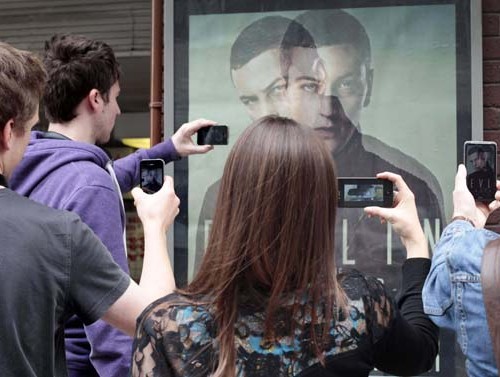Creating glorious harmony across today’s diverse mix of channels is easier said than done, especially when the customer’s preferred point of engagement with your brand is increasingly shifting to mobile. How can you connect your latest direct mail campaign to your company’s mobile app? Link your print ads to online points of purchase, or your products on shelf in store to customer-generated YouTube videos? And how can you measure the customer journey across all these points of engagement, and by measuring, optimise the customer experience and with it your revenue?
A thankless task indeed – at least, that was before the emergence of Augmented Reality – or AR as it’s known. A customer today who downloads a brand’s mobile app with an AR feature inside can use it to connect their mobile experience with the brand’s direct mail, outdoor ads, print ads, point of sale, product on shelf and even TV spots. Suddenly, mobile moves right to the centre of the marketing mix and by doing so, allows brands to deliver on the promise of an integrated and rewarding customer experience across every channel.
Marketing as Science
Research house Gartner recently predicted that by 2017, the IT budgets of Chief Marketing Officers will be greater than those held by Chief Information Officers. No surprise there – today’s marketers are increasingly in charge of large scale cloud investments and directly responsible for revenue generation. With that change in responsibility comes a fundamental shift from Marketing as Art, largely driven by instinct and experience – to Marketing as Science, largely driven by data.
Making good on a brand’s commitment to deliver great customer experiences and thereby increase revenue requires marketers to have a deep understanding of customer interactions and continually optimise them. While online and mobile activity deliver real-time stats on that engagement, customer engagement with offline aspects of the marketing mix remains a virtual data blind spot. How many people actually engaged with that particular print ad? How many people picked up the product in store and looked at the information on the back of the pack? The truth is, until now marketers have merely shrugged. They’ve been unable to measure offline engagement in a meaningful, real time way – despite the fact that offline activity typically accounts for 80% of marketing spend.
Augmented Reality allows those questions to be answered for the first time by making everything online – print, products and even places. Now for the first time marketers can measure interactions and click throughs on every aspect of the marketing mix and gain a greater understanding of the customer journey than ever before.
Video is King
The last ten years of online measurement and multi variant testing has made one thing very clear. Video works. Research from Forrester indicates that consumers are on average 200% – 300% more likely to click on a video link than a text one. Note the rapid adoption of product videos by online retailers – they know we humans are visual creatures and that we buy with our eyes. With AR, companies can now start to extend the conversion benefits of video from online to the rest of their business. Brands can now deliver video content embedded, not just on their website, but on every other aspect of the marketing mix. Product packaging can deliver helpful instructional videos; direct mail and print advertising can carry the latest TV ad. By using AR to deliver video at every step of the customer journey, brands can increase their conversion and their revenue. It’s a simple win, with companies often extending the use of video materials already created for online, social or TV.
Getting Started
With IT budgets shifting to marketing departments, one might expect to see our rose tinted spectacles being replaced with a harder nosed perspective on the world, where adopting a new marketing channel is envisioned as an epic infrastructure project. But getting on board with AR is easy. Cloud-based platforms allow companies to publish their own augmented reality content using in-house resources with next to no capital investment. Today’s WYSIWYG interfaces make using AR platforms as simple as uploading content to a website – anyone in a marketing or digital team can do it. What’s clear is that while some companies are struggling to make mobile relevant to the rest of their business, others are taking the plunge and using AR to put mobile where it belongs, right at the heart of the marketing mix and today’s multichannel customer experience.






